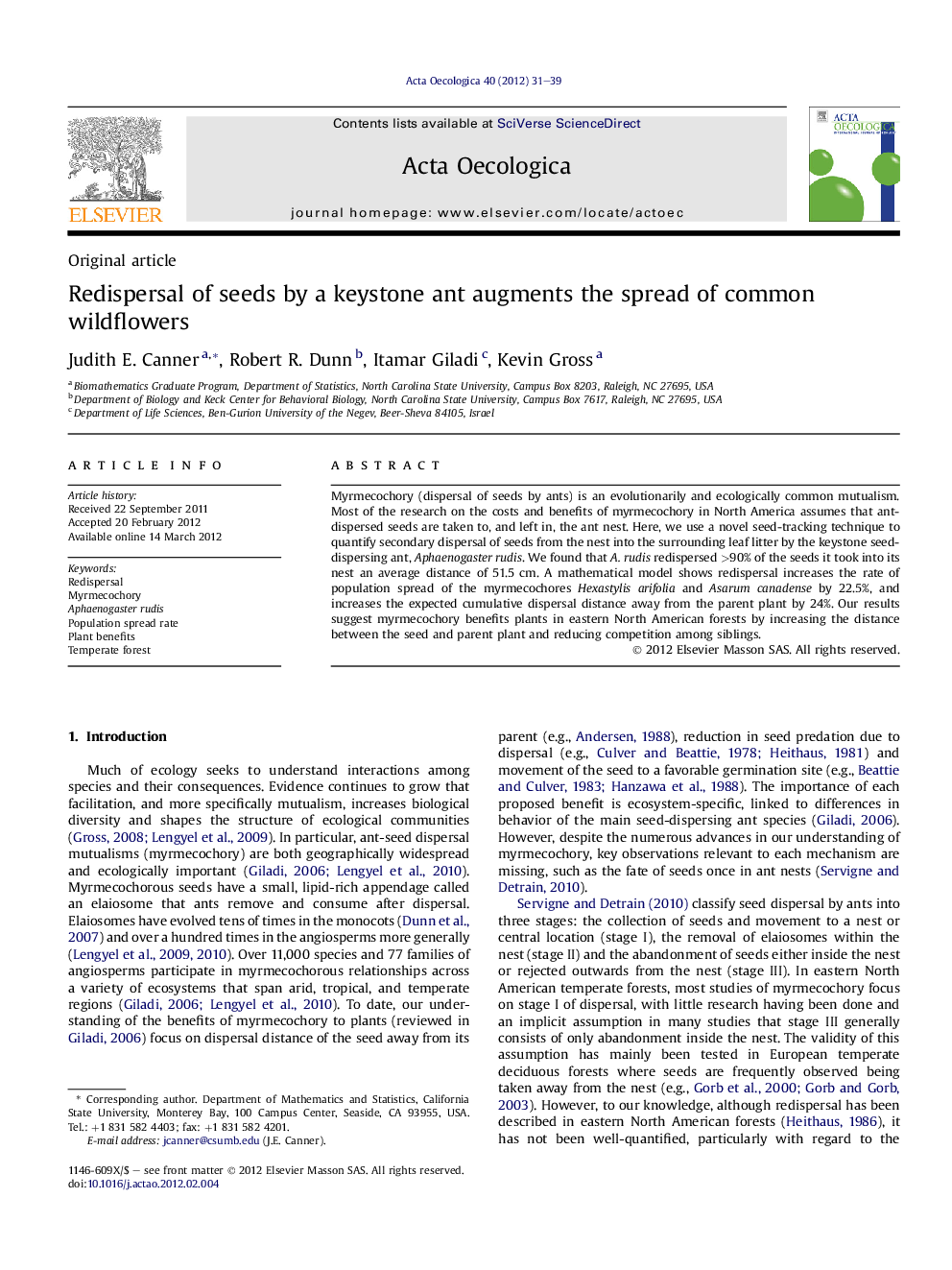| کد مقاله | کد نشریه | سال انتشار | مقاله انگلیسی | نسخه تمام متن |
|---|---|---|---|---|
| 4381192 | 1617731 | 2012 | 9 صفحه PDF | دانلود رایگان |

Myrmecochory (dispersal of seeds by ants) is an evolutionarily and ecologically common mutualism. Most of the research on the costs and benefits of myrmecochory in North America assumes that ant-dispersed seeds are taken to, and left in, the ant nest. Here, we use a novel seed-tracking technique to quantify secondary dispersal of seeds from the nest into the surrounding leaf litter by the keystone seed-dispersing ant, Aphaenogaster rudis. We found that A. rudis redispersed >90% of the seeds it took into its nest an average distance of 51.5 cm. A mathematical model shows redispersal increases the rate of population spread of the myrmecochores Hexastylis arifolia and Asarum canadense by 22.5%, and increases the expected cumulative dispersal distance away from the parent plant by 24%. Our results suggest myrmecochory benefits plants in eastern North American forests by increasing the distance between the seed and parent plant and reducing competition among siblings.
► We measure redispersal of seeds out of the nest by Aphaenogaster rudis.
► We model myrmecochory and account for multiple dispersal events in the model.
► Inclusion of redispersal in model increases plant population spread rate estimates.
► Redispersal may influence view of evolution of myrmecochory in temperate forests.
Journal: Acta Oecologica - Volume 40, April 2012, Pages 31–39